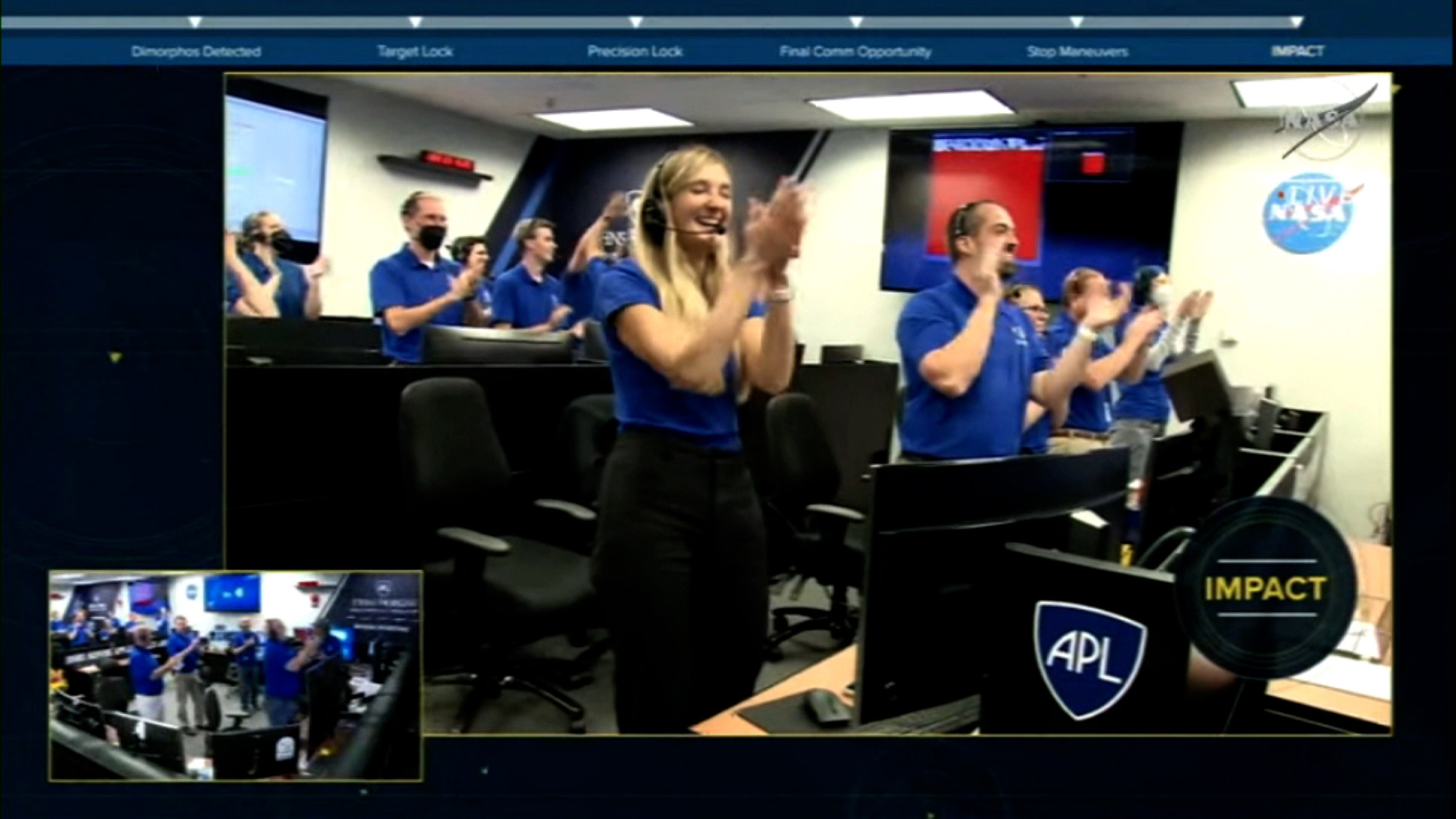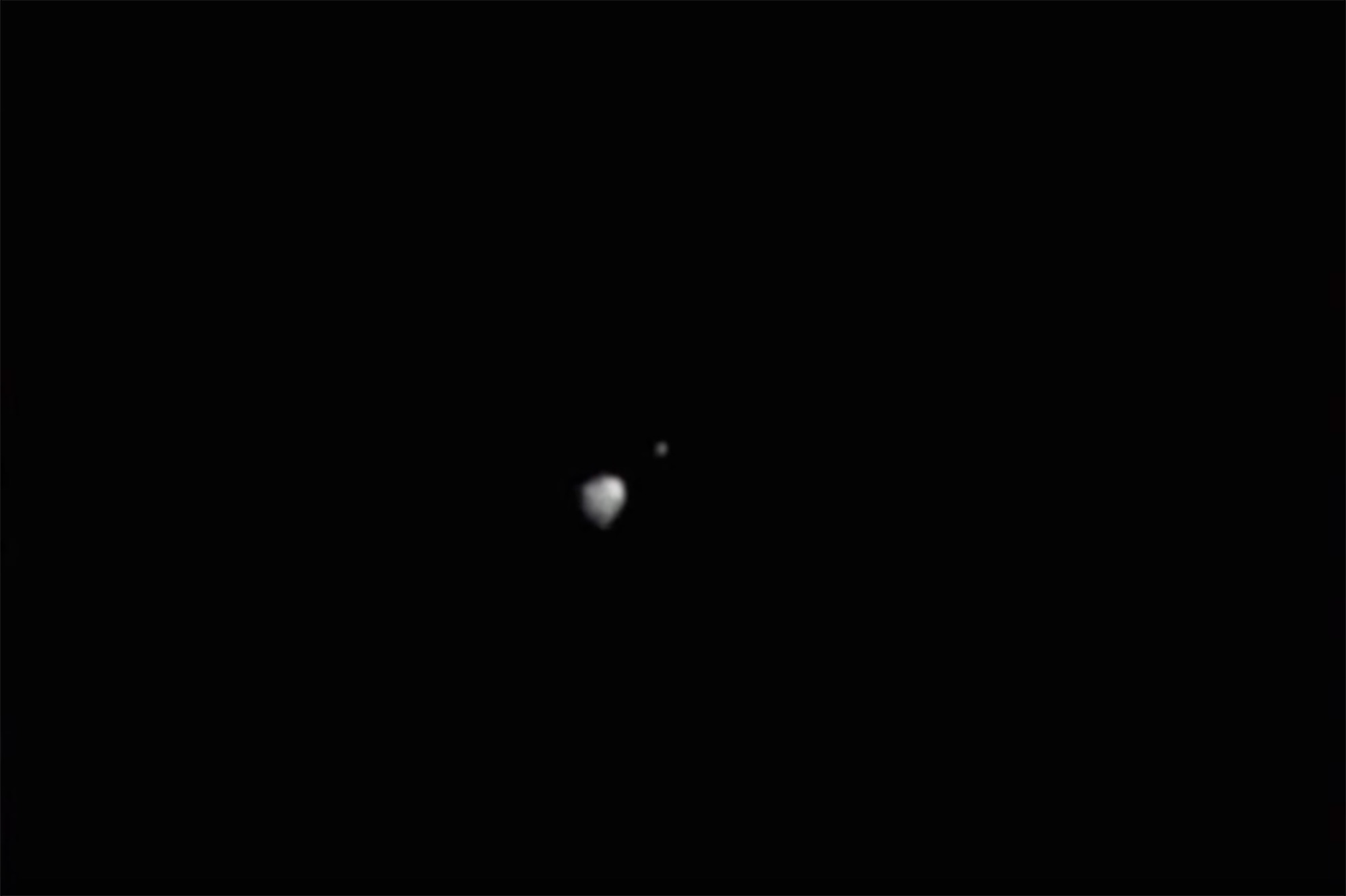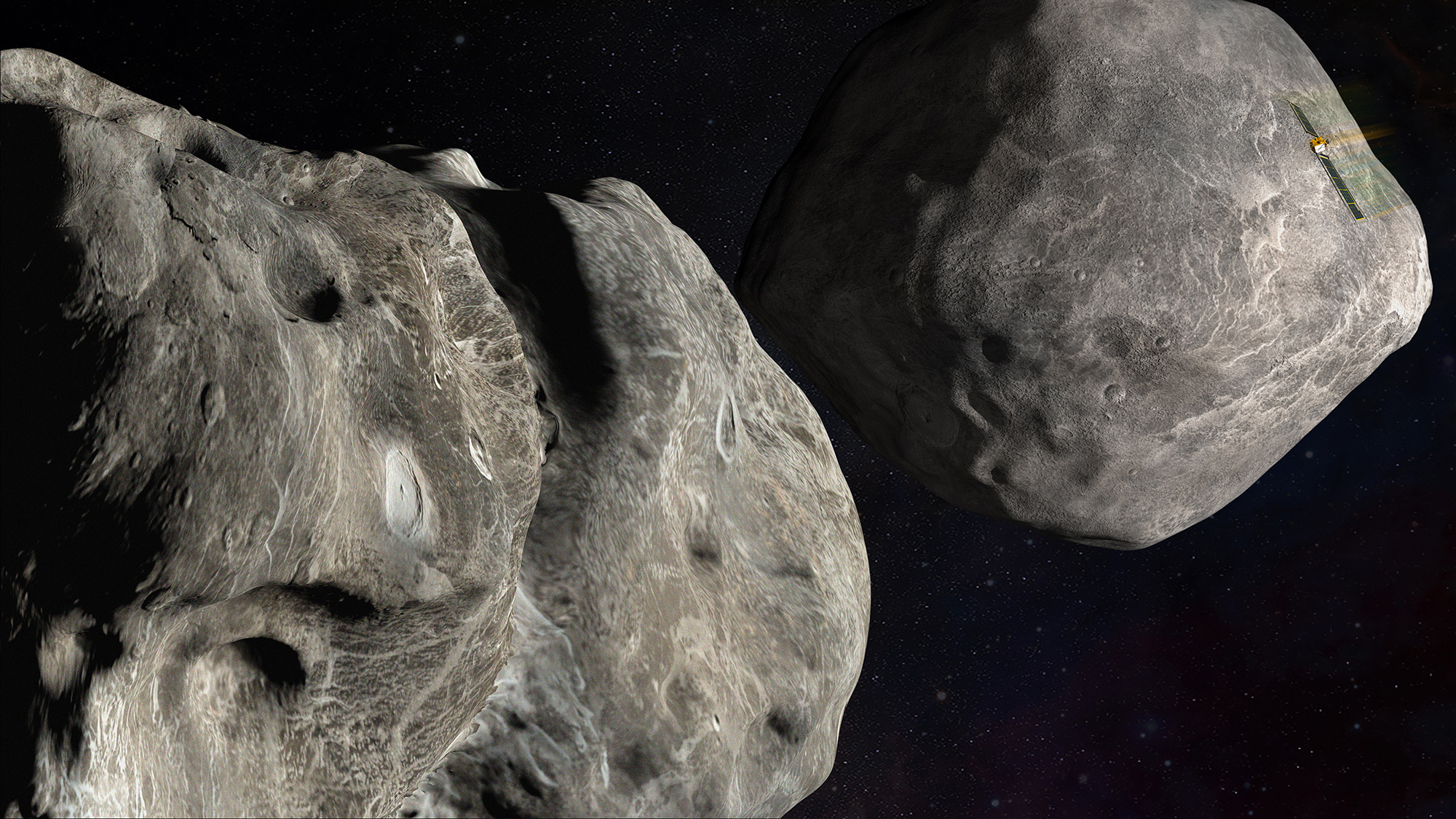After DART's successful collision with an asteroid, the science is just getting started
From CNN's Ashley Strickland
For the first time in history, NASA is trying to change the motion of a natural celestial body in space. Now that a spacecraft successfully hit the asteroid Dimorphos — the science is just getting started.
To survey the aftermath of the impact, the European Space Agency’s Hera mission will launch in 2024. The spacecraft, along with two CubeSats, will arrive at the asteroid system two years later.
Hera will study both asteroids, measure physical properties of Dimorphos, and examine the DART impact crater and the moon’s orbit, with the aim of establishing an effective planetary defense strategy.
The Italian Space Agency’s Light Italian CubeSat for Imaging of Asteroids, or LICIACube, will fly by Dimorphos to capture images and video of the impact plume as it sprays up off the asteroid and maybe even spy the crater it could leave behind. The mini-satellite will also glimpse Dimorphos’ opposite hemisphere, which DART won’t get to see before it’s obliterated.
The CubeSat will turn to keep its cameras pointed at Dimorphos as it flies by. Days, weeks and months after, we’ll see images and video captured by the Italian satellite that observed the collision event. The first images expected back from LICIACube could show the moment of impact and the plume it creates.
The LICIACube won’t be the only observer watching. The James Webb Space Telescope, the Hubble Space Telescope and NASA’s Lucy mission will observe the impact. The Didymos system may brighten as its dust and debris is ejected into space, said Statler, the NASA program scientist.
But ground-based telescopes will be key in determining if DART successfully changed the motion of Dimorphos.
"A new era of humankind": DART mission operations celebrates collision

DART mission operations erupted in celebration after the spacecraft successfully hit Dimorphos.
"We're embarking on a new era of humankind, an era in which we potentially have the capability to protect ourselves from something like a dangerous, hazardous asteroid impact," said Lori Glaze, director of NASA's Planetary Science Division. "What an amazing thing. We've never had that capability before."
The DART spacecraft has hit Dimorphos
From CNN's Ashley Strickland

A NASA spacecraft has successfully slammed into an asteroid called Dimorphos.
The Double Asteroid Redirection Test mission, or DART, spacecraft has been traveling to reach its asteroid target since launching in November 2021. On Monday, it hit its target going about 13,421 miles per hour.
The spacecraft was about 100 times smaller than Dimorphos, so it didn't obliterate the asteroid. Instead, DART hopes the collision changed the asteroid's speed and path in space. The mission team has compared this collision to a golf cart crashing into one of the Great Pyramids – enough energy to leave an impact crater.
Scientists expect the nudge will shift Dimorphos slightly and make it more gravitationally bound to Didymos, the larger asteroid in the system.
Next steps: Ground-based observatories around the world will be observing the asteroid system as a way to confirm if DART successfully changed the asteroid’s motion. The James Webb Space Telescope, the Hubble Space Telescope and NASA’s Lucy mission will also observe the aftermath.
Plus, the European Space Agency’s Hera mission will launch in 2024 to continue to study the impact.
The DART spacecraft has lost radio contact
From CNN's Ashley Strickland
Crews on the ground have not lost radio contact with the Double Asteroid Redirection Test, or DART, spacecraft.
Images will continue to come through and be displayed for about the next 8 seconds as they travel through space to Earth, said Edward Reynolds, DART project manager at the Applied Physics Lab.
"Our last image is probably going to be from about two and a half seconds prior to impact, so the DRACO field of view is actually going to be completely filled with this beautiful image of Dimorphos,” said Elena Adams, DART mission systems engineer at the Johns Hopkins University Applied Physics Laboratory in Laurel, Maryland.
We are seeing the first detailed images of Dimorphos
From CNN's Ashley Strickland
We are getting our first detailed look at Dimorphos, a tiny asteroid moon orbiting the larger asteroid Didymos, just before a spacecraft slams into it.
Humans have never seen Dimorphos before because the asteroid system just appears as a single point of light in ground-based telescopes. Scientists are now able to ascertain Dimorphos’ shape, as well as if its surface is rough or smooth.
The DART spacecraft is carrying an imager called DRACO, short for Didymos Reconnaissance and Asteroid Camera for Optical navigation, that is sharing a live stream of images as the spacecraft gets closer to impact.
DART has locked onto its target, Dimorphos
From CNN's Ashley Strickland

Double Asteroid Redirection Test, or DART, has locked in on its target, Dimorphos.
It was heading toward the larger asteroid in the system, Didymos.
But now that the smaller moon, Dimorphos, is visible to the DART's onboard imager, the spacecraft's navigation system is locking in on its target.
This is called "precision lock," according to Elena Adams, the DART mission systems engineer at the Johns Hopkins University Applied Physics Laboratory.
“Which means we are now starting to ignore Didymos and we are only going to Dimorphos," she said.
The spacecraft, which is operating competently autonomously, is steering itself toward Dimorphos using a series of algorithms — also known as Small-body Maneuvering Autonomous Real Time Navigation (SMART Nav).
Dimorphos will grow larger and larger until it fills the entire frame of the imager just before impact.
DART is on a stable track with less than an hour to impact, mission engineer says
The DART spacecraft is on a stable track about an hour out from impact, a DART mission engineer said.
"We're very excited. We are starting to see Dimorphos for the first time. It is looking great. It is just about the same dimness as Didymos as we expected. And so, we are getting ready to transition. We have a stable track at this point," Elena Adams, DART mission engineer, said.
The spacecraft is heading for a double-asteroid system, where a tiny "moon" asteroid, named Dimorphos, orbits a larger asteroid, Didymos.
Here's the first live photo from the DART spacecraft of the asteroid Didymos
From CNN's Ross Levitt

For the first time, we are seeing live pictures from the DART spacecraft.
In the image, you can see a bright light.
NASA confirmed to CNN's Kristin Fisher that the light is Didymos, the larger of the two asteroids.
DART is aiming for Didymos but in the last moments will take aim at a smaller, nearby asteroid, Dimorphos, which orbits Didymos.
NASA is hoping to hit Dimorphos as part of humanity's first planetary defense test.
The DART spacecraft is heading to this asteroid system
From CNN's Ashley Strickland

The DART spacecraft is heading for a double-asteroid system, where a tiny "moon" asteroid, named Dimorphos, orbits a larger asteroid, Didymos.
Didymos, which means "twin" in Greek, is roughly 2,560 feet (780 meters) in diameter. Meanwhile, Dimorphos measures 525 feet (160 meters) across, and its name means "two forms."
At the time of impact, Didymos and Dimorphos will be relatively close to Earth — within 6.8 million miles (11 million kilometers).
Neither Dimorphos nor Didymos is at risk of colliding with Earth — before or after the collision takes place.


